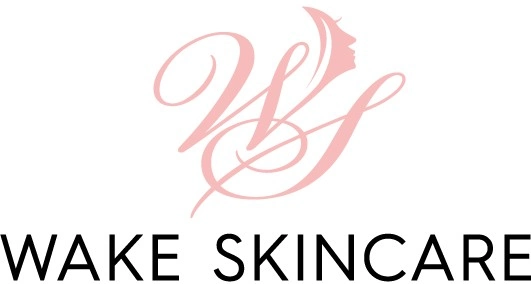Summary:
How Chemical Peels Work to Treat Acne Scars and Hyperpigmentation
Chemical peels use specialized chemical solutions to remove dead skin cells, stimulate collagen production, and encourage cellular turnover, helping to improve the texture and tone of your skin by peeling away damaged layers, revealing fresh, healthy skin underneath. Think of it as a controlled reset for your skin’s surface.
Unlike physical exfoliants that only remove surface-level debris, chemical peels dissolve the bonds between dead skin cells, allowing them to shed more efficiently, leaving your skin looking smoother and more radiant while helping clear clogged pores and reduce rough texture. This process goes beyond what you can achieve with at-home products.
The magic happens at the cellular level. As the skin heals from a chemical peel, it ramps up collagen production, which improves skin elasticity, firmness, and overall structure, making peels highly effective in reducing fine lines, wrinkles, and sagging, giving the skin a more youthful, plump appearance.
Why Chemical Peels Are Effective for Acne Scars
Chemical peels can be an excellent option for treating acne scars because they stimulate new collagen production and remove discolored, dead skin cells, revealing healthy new skin. Collagen is the most abundant protein in the skin, providing a firm foundation and structural support. Depressed acne scars form when the inflammation associated with acne lesions causes irreparable damage to the underlying skin tissue, leading to the destruction of collagen.
Research shows that when microneedling was combined with 35% glycolic acid peels, there was significant improvement in superficial and moderately deep atrophic box scars and rolling scars, plus improvement in skin texture and reduction in post-acne pigmentation. This demonstrates how chemical peels can address multiple aspects of acne scarring simultaneously.
Light peels induce localized injury within the epidermis and are particularly effective for conditions such as acne and hyperpigmentation, while medium peels are suitable for addressing concerns such as hyperpigmentation, actinic keratoses, superficial acne scars, and shallow wrinkles. The depth of treatment can be customized based on your specific scarring pattern.
Certain peels, especially those containing salicylic acid or Jessner’s solution, are great for treating acne-prone skin by helping unclog pores, reduce oil production, and kill acne-causing bacteria, while working to soften and resurface acne scars, improving overall skin texture over time. This dual action addresses both active breakouts and existing scarring.
How Chemical Peels Address Hyperpigmentation and Dark Spots
Sun exposure, aging, and hormonal changes can lead to uneven skin tone, melasma, and stubborn dark spots. Chemical peels work by breaking up excess melanin in the skin and encouraging faster cell turnover, which fades discoloration and evens out skin tone more effectively than most topical treatments.
Chemical peels assist in correcting hyperpigmentation issues such as age spots, sunspots, and melasma, resulting in a more balanced and uniform skin tone. This benefit is achieved as the peels remove the hyperpigmented skin layers, revealing lighter, more evenly pigmented skin underneath. The results are often visible within just a few treatments.
Studies show that after undergoing glycolic acid peels, 75% of patients experienced good therapeutic response, with patients showing postinflammatory hyperpigmentation and scarring demonstrating excellent improvement, plus significant decrease in the number of comedones and papulopustules in patients with mild to moderate acne.
The process is particularly effective for post-inflammatory hyperpigmentation—those dark marks left behind after acne heals. Chemical peels reduce post-inflammatory hyperpigmentation and treat mild acne scars while exhibiting antibacterial properties, preventing future breakouts and promoting an even skin tone. This means you’re not just treating existing discoloration but also preventing new dark spots from forming.
Types of Chemical Peels and Their Benefits for Different Skin Concerns
Different chemicals determine the depth of your peel and type of skin condition treated. Medium chemical peels may be best if you have uneven or moderate skin discoloring, age spots, acne scarring or fine-to-moderate wrinkles. Understanding your options helps you make the right choice for your skin goals.
The superficial or light peel segment held the largest revenue share in 2024, attributed to its non-invasive nature, minimal downtime, and ease of application. These peels offer effective skin rejuvenation with minimal side effects, making them popular among individuals seeking subtle improvements and have become a go-to option for individuals looking to address mild skin concerns such as fine lines, acne scars, and uneven skin tone.
Not all peels are created equal, and that’s actually good news for you. Chemical peels aren’t a one-size-fits-all treatment. They come in different strengths and formulations, allowing them to be tailored to your specific skin type and concerns.
Light Chemical Peels for Maintenance and Mild Concerns
Light peels are your entry point into professional skin resurfacing. Light chemical peels offer gentle exfoliation, affecting only the outermost skin layer, containing 15% glycolic acid, 15% trichloroacetic acid, and 2% zinc. For optimal results, they should be used bi-weekly and are effective in controlling acne, reducing post-inflammatory hyperpigmentation and redness, and enhancing the effectiveness of medical acne treatments.
During application, patients might experience a slight stinging or burning sensation, but the recovery time is minimal—usually only one to two days. This makes them perfect for busy lifestyles where you can’t afford significant downtime.
Glycolic acid peels are a gentle yet effective treatment to cure acne scars. These peels, made from sugarcane, can easily treat mild to moderate acne scars as well as uneven skin texture by cleansing the outer surface of the skin and removing dead cells, promoting the growth of new skin cells, resulting in the disappearance of acne scars and smooth, even skin texture.
The lactic acid peel segment is anticipated to emerge as the fastest-growing segment with a CAGR of 6.0% from 2025 to 2030, owing to its gentle yet effective exfoliating properties. Derived from milk, lactic acid is known for its ability to improve skin texture, brighten dark spots, and hydrate the skin, making it ideal for sensitive skin types. This makes lactic peels an excellent choice if you have sensitive skin but still want effective results.
Medium and Deep Peels for Advanced Skin Concerns
When light peels aren’t enough, medium-depth peels step up to address more stubborn concerns. Medium-depth peels penetrate the middle layers of the skin to resurface healthy skin and improve rough texture, acne scars, and deeper wrinkles. The SkinMedica Vitalize peel is recommended for mild to moderate skin imperfections and is used to reduce the appearance of fine lines and wrinkles, sun damage, acne scarring, hyperpigmentation, and melasma. A series of 3 peels can be repeated every 3-4 weeks, with minimal downtime but 2-5 days of mild peeling expected.
The medium peel segment is projected to grow at the fastest CAGR during the forecast period, fueled by its ability to address a wide range of skin concerns, including moderate wrinkles, acne scars, and hyperpigmentation. Offering deeper exfoliation than light peels but less aggressive than deep peels, medium peels provide a balanced solution with minimal recovery time, and increasing consumer demand for non-invasive cosmetic procedures is expected to drive their popularity.
For the most dramatic transformations, deep peels offer maximum results. A deep chemical peel produces the most dramatic results, penetrating down to the lower middle layer of your skin, and may be best if you have moderate lines and wrinkles, extensive sun-damaged skin, deep acne scars, blotchy skin, and/or precancerous growths called actinic keratosis. However, deep chemical peels require pretreatment for up to eight weeks and are a one-time only treatment if applied to your face with significant downtime.
The key is finding the right depth for your specific concerns. Chemical peels are classified by the depth of action into superficial, medium, and deep peels. The depth of the peel is correlated with clinical changes, with the greatest change achieved by deep peels, but the depth is also associated with longer healing times and the potential for complications.
Getting the Best Results from Chemical Peels in Wake County
The benefits of a chemical peel go beyond just one treatment—they build over time. Regular chemical peels can dramatically improve skin texture, clarity, and resilience, making them an essential part of any long-term skincare routine. Think of it as an investment in your skin’s future, not just a quick fix.
The key to success lies in professional expertise and personalized treatment plans. A chemical peel is a cosmetic treatment used to reduce active acne, acne scarring, and post-inflammatory hyperpigmentation, and should be performed by a board-certified dermatologist to guarantee safety and ideal results. This is where our expertise at Wake Skincare becomes invaluable.
If you’re ready to address those stubborn acne scars and hyperpigmentation issues that have been bothering you, it’s time to explore what professional chemical peels can do for your skin. At Wake Skincare, we specialize in creating customized treatment plans that deliver the results you’re looking for, backed by years of experience and multiple industry awards.




